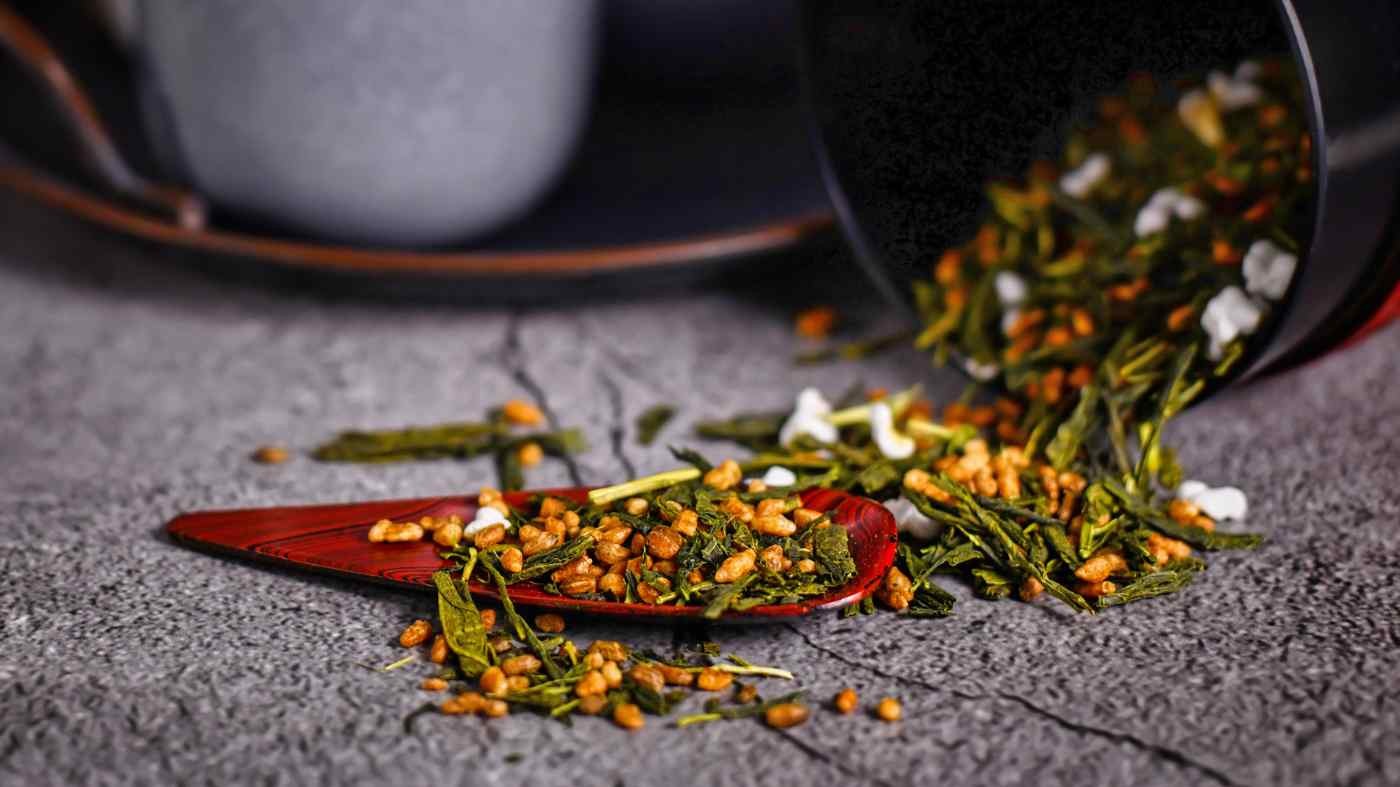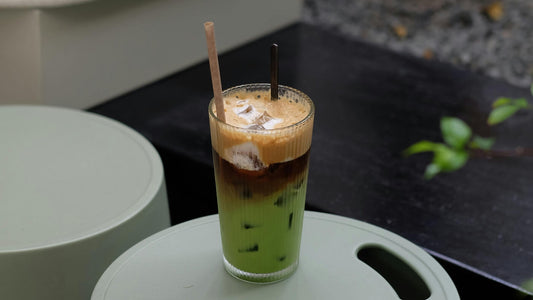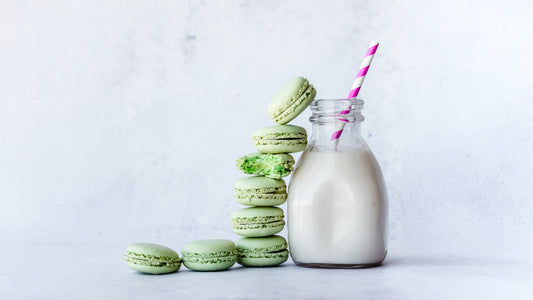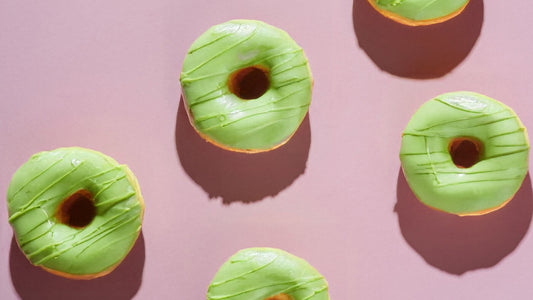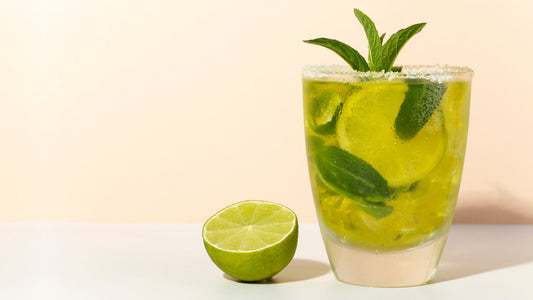Tips for How to Make Your Own Genmaicha Better
Now that you’ve learned how to make your own genmaicha, it’s time to play around with different parameters to make it better. Here are two different tips we found that could make your homemade genmaicha better:
Use High-Quality Tea Leaves
The quality of the tea leaves used to make Genmaicha is important for the final flavor of the tea. High-quality green tea leaves, such as Sencha or Bancha, are recommended for making Genmaicha.
It is important to use fresh, high-quality tea leaves, as using older or low-quality tea leaves can result in a dull or bitter flavor. If you find that the flavor of your homemade genmaicha is not very good, you might want to switch up the leaves!
If you're looking for the very best when it comes to genmaicha, why not check out our buying guide 👉 How and Where to Find the World’s Best Genmaicha Tea
Experiment with the Proportion of Tea Leaves to Rice
Experimenting with the proportion of tea leaves to toasted brown rice is one way to create a Genmaicha with a unique flavor profile.
Using more tea leaves will result in a stronger, more tea-forward flavor, while using more toasted brown rice will result in a milder, nuttier flavor.
It is recommended to start with a ratio of 1 part green tea leaves to 2 parts toasted brown rice, and then adjust the ratio based on personal preference. If you find that the tea just tastes like roasted rice and not really like a “green tea” you can use more leaves.
What you need to know before we learn how to make your own genmaicha
Definition of Genmaicha
Genmaicha is a type of Japanese green tea that is made by mixing roasted brown rice with green tea leaves. The resulting tea has a unique and delicious flavor, with the nutty and toasty notes of the rice complementing the fresh and vegetal notes of the green tea.
Genmaicha is a staple of Japanese tea culture, and is enjoyed for its comforting and warming taste.
If you want to get to the bottom of the true meaning of genmaicha beyond its simple definition, you can read our article 👉 Why the Genmaicha Meaning is Deeper than You Think
Popularity of Genmaicha
Genmaicha has been a popular type of tea in Japan for centuries, and its popularity has continued to grow in recent years. It is considered a healthy and refreshing drink that is enjoyed by people of all ages.
Genmaicha is also enjoyed for its unique flavor and aroma, which is a result of the combination of green tea leaves and roasted brown rice. The tea is often served as a comfort drink, and is also enjoyed as a pick-me-up in the afternoon or as a relaxing drink in the evening.
If you want to learn how genmaicha compares to the most popular green tea in Japan, you can read our comparison 👉 Learn all the differences between Sencha vs Genmaicha
Benefits of learning How to make your own genmaicha
Learning how to make your own genmaicha offers a number of benefits. Firstly, it allows you to control the quality and freshness of the ingredients, which can greatly impact the taste and aroma of the final product.
Health
Genmaicha is a very healthy tea, and if you learn to make it yourself you'll always have a constant supply! This will help you incorporate it into your daily routine and build healthy habits.
But what is genmaicha good for exactly? For that, you'll need to read our article 👉Genmaicha Tea Benefits Explained by Tea Experts
Cost effective Genmaicha
In addition to the tea being fresher, homemade genmaicha is a cost-effective option compared to buying pre-packaged tea, and it also allows you to experiment with different ratios of green tea leaves and roasted brown rice to find the perfect flavor and aroma.
Educational
Learning how to make your own genmaicha can be an educational activity, and it can even lead to a better understanding of the flavors of green tea.
Additionally, making Genmaicha at home is just a fun activity you can do with friends or family. If you are an experienced tea drinker or even a newcomer to the world of tea, learning how to make your own genmaicha at home is a rewarding and enjoyable experience.
Ingredients for How to make your own genmaicha explained
Green Tea Leaves
Green tea leaves are the base ingredient for Genmaicha. It is recommended to use high-quality, fresh green tea leaves for the best taste and aroma.
Sencha, the most popular type of green tea in Japan, is often used to make Genmaicha, but other types of green tea, such as bancha or hojicha, can also be used. The type of green tea used will affect the final flavor and aroma of the Genmaicha.
Roasted Brown Rice
Roasted brown rice is the second key ingredient when it comes to how to make your own genmaicha. It is important to use high-quality, freshly roasted brown rice to ensure the best taste and aroma.
The brown rice is roasted until it is a light golden brown color, and then it is mixed with the green tea leaves to create the final product. The proportion of green tea leaves to roasted brown rice will affect the final flavor and aroma of the Genmaicha.
How to make your own genmaicha with matcha powder
While not necessary, some people like to add additional ingredients to their Genmaicha to create a unique flavor. Matcha powder, a type of powdered green tea, can be added to Genmaicha to create a richer and more complex flavor.
This genmaicha with matcha powder is called Matcha Iri Genmaicha, and if you want to learn more about it, you can read our guide here 👉 Learn all about Matcha Iri Genmaicha: the greenest tea you’ll ever see
How to Make Your Own Genmaicha Roasted Tea
Hojicha, another type of Japanese green tea, can also be added to Genmaicha to create a different taste profile. This is a type of tea called “hoji genmaicha” which is also popular as a low caffeine Japanese green tea.
The roasted tea leaves pair nicely with the warm toasted flavors of the rice to create a delicious green tea.
If you want to learn more about roasted teas like hojicha, we made a complete guide for you 👉 Everything You Need to Know About Hojicha

